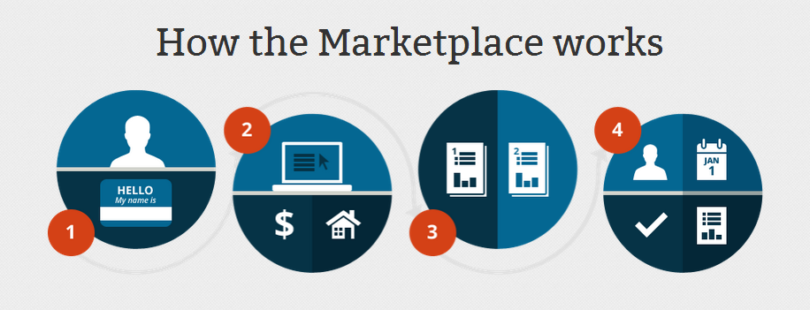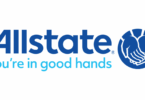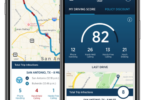Advertisements
In the United States, access to affordable healthcare coverage is a top priority for millions of individuals and families. Marketplace insurance, also known as Affordable Care Act (ACA) insurance or health insurance through the Health Insurance Marketplace, is designed to provide comprehensive, government-regulated health plans to those who may not have access to employer-sponsored or private coverage.
Whether you’re self-employed, unemployed, or looking for alternatives to COBRA or short-term health insurance, understanding Marketplace insurance can help you make an informed and financially sound decision about your healthcare.
What is the Health Insurance Marketplace?
The Health Insurance Marketplace is a federally and state-run platform created under the Affordable Care Act (ACA) where individuals, families, and small businesses can compare, shop for, and enroll in health insurance plans. Plans sold through the Marketplace must meet minimum essential coverage standards and include 10 essential health benefits, including:
- Emergency services
- Prescription drugs
- Hospitalization
- Maternity and newborn care
- Preventive and wellness services
- Mental health and substance abuse treatment
- Pediatric care
- Rehabilitative services
- Ambulatory care
- Laboratory services
Who is Eligible for Marketplace Insurance?
You may qualify for Marketplace insurance if you:
- Are a U.S. citizen or legal resident
- Do not have access to affordable employer-based health coverage
- Are not eligible for Medicare or Medicaid
- Reside in the state where you’re applying for coverage
Special Enrollment Periods (SEPs)
Outside of the Open Enrollment Period, you may be eligible for a Special Enrollment Period due to life events such as:
Advertisements
- Losing job-based coverage
- Marriage or divorce
- Having a baby
- Moving to a new ZIP code
What Types of Marketplace Plans Are Available?
Marketplace insurance plans are categorized into four metal tiers based on how costs are shared between you and the insurance provider:
1. Bronze
- Lowest monthly premiums
- Highest out-of-pocket costs
- Ideal for healthy individuals who need coverage mainly for emergencies
2. Silver
- Moderate premiums and out-of-pocket costs
- Eligible for cost-sharing reductions (CSRs) if income qualifies
3. Gold
- Higher monthly premiums
- Lower out-of-pocket costs
- Suitable for individuals who expect regular medical care
4. Platinum
- Highest premiums
- Lowest out-of-pocket costs
- Best for individuals with ongoing healthcare needs
High-CPC Keywords Targeted in This Article
To boost search engine visibility and ad revenue, this article targets high CPC insurance-related keywords, including:
- What is Marketplace health insurance
- Compare ACA insurance plans
- Health insurance subsidies 2025
- How to qualify for Marketplace coverage
- Marketplace insurance premiums and deductibles
- Obamacare health plans explained
- Best health insurance through Marketplace
Financial Assistance Through the Marketplace
One of the main benefits of Marketplace insurance is financial help based on income:
1. Premium Tax Credits
Available to individuals and families earning between 100% and 400% of the federal poverty level (FPL), these credits help lower monthly premium costs.
2. Cost-Sharing Reductions
If you qualify, you may also receive lower deductibles, copayments, and out-of-pocket maximums when choosing a Silver plan.
Use the Marketplace calculator on HealthCare.gov or your state’s exchange to estimate your savings.
How to Enroll in Marketplace Insurance
Step 1: Visit the Official Marketplace
- Federal:
- State-run exchanges (e.g., Covered California, NY State of Health)
Step 2: Create an Account
Provide your name, address, income, and household information to determine eligibility.
Step 3: Compare Plans
Evaluate monthly premiums, deductibles, provider networks, and prescription drug coverage.
Step 4: Choose a Plan and Enroll
Once you select the plan that best fits your needs and budget, complete enrollment and set up premium payments.
Marketplace Insurance vs. Private Insurance
| Feature | Marketplace Insurance | Private Insurance |
|---|---|---|
| Regulated by ACA | Yes | Not always |
| Subsidies available | Yes | No |
| Standardized benefits | Yes | Varies by provider |
| Enrollment timing | Limited periods | Year-round availability |
| Cost-sharing reductions | Available on Silver plans | Not available |
Conclusion
Marketplace insurance offers a flexible, regulated, and often subsidized health coverage solution for individuals and families who need reliable protection. Whether you’re in transition between jobs, self-employed, or simply exploring better options, Marketplace plans provide essential benefits, financial assistance, and peace of mind.
By understanding your eligibility, comparing plan options, and utilizing available tax credits, you can enroll in a health plan that fits both your healthcare needs and your budget. Start by visiting the official Marketplace or your state’s health exchange to explore your options and get a free quote today.
Need help comparing Marketplace plans or calculating your subsidy eligibility? I can assist you step by step. Let me know your goals, and I’ll help you find the best health insurance fit.
Advertisements






